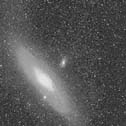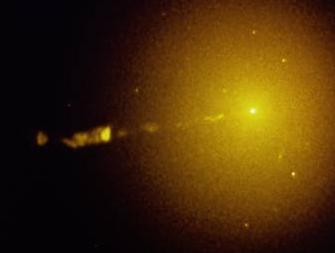
| Bad Astronomy |
|
|
|
BA Blog
|
|
Q & BA
|
|
Bulletin Board
|
| Media |
|
|
|
Bitesize Astronomy
|
|
Bad Astro Store
|
|
Mad Science
|
|
Fun Stuff
|
| Site Info |
|
|
|
Links
|
| RELATED SITES |
| - Universe Today |
| - APOD |
| - The Nine Planets |
| - Mystery Investigators |
| - Slacker Astronomy |
| - Skepticality |
Buy My Stuff

Keep Bad Astronomy close to your heart, and help make me
filthy rich. Hey, it's either this or one of those really
irritating PayPal donation buttons here.
The Messier Catalog
Week of September 6, 1999
One of the aspects of astronomy that has always befuddled me is the bookkeeping involved. I work with a database of over 30,000 images many of which have hundreds or even thousands of stars in them (and one project on which I am working is trying to catalog all those stars!). To help guide the Hubble Space Telescope a catalog of 13 million stars was created. You can buy this catalog yourself, if you have a place to keep the XXX CDs that contain all the data.
I often wonder what this cataloguing must have been like before the computer. Hundreds of years ago, the only way to keep track of astronomical objects was to make careful drawings with copious attending notes. Luckily, there were many scrupulous and very careful observers long ago...
One in particular was named Charles Messier (he was French, so don't pronounce it ``mess ee er''! It's ''Sharlz Mez-yay''). He was a comet hunter back in the late 1700s. While still a young man, he embarked on trying to recover Comet Halley, which means that the astronomer Edmund Halley had made a prediction that the comet would again be visible in 1758. Before this, it was unknown that comets actually were periodic objects, that came back again after traveling into the starry deep.
 Messier was not the person to first see the now-famous comet's return, but
an interesting happened during the search. He used someone else's
calculations of just where the comet should be, and as it happens the
numbers were wrong. Messier was looking in the wrong place! He was
searching in the constellation Taurus, and found to his annoyance that there
was a fuzzy patch that looked just like a comet through his telescope, except
that this patch didn't move. He made a note of it, in essence saying
``ignore this object''. Over time he found more fuzzy objects, and measured
their positions. Between the years 1771 and 1784 the list grew to about
100 objects (many of which were found by others as well), and he gave
his list to other comet hunters so they might not
be fooled.
Messier was not the person to first see the now-famous comet's return, but
an interesting happened during the search. He used someone else's
calculations of just where the comet should be, and as it happens the
numbers were wrong. Messier was looking in the wrong place! He was
searching in the constellation Taurus, and found to his annoyance that there
was a fuzzy patch that looked just like a comet through his telescope, except
that this patch didn't move. He made a note of it, in essence saying
``ignore this object''. Over time he found more fuzzy objects, and measured
their positions. Between the years 1771 and 1784 the list grew to about
100 objects (many of which were found by others as well), and he gave
his list to other comet hunters so they might not
be fooled.

The irony of all this is that he managed to catalogue the brightest and most beautiful objects in the sky, the ones easiest to see and most sought after by beginning amateur astronomers... and the list was made as a list of objects to avoid! In the 18th century he could not have known what he was really seeing, but to our modern eyes and instruments we see his list as a diverse and stunning array of nebulae, galaxies, open and globular clusters of stars.

Messier was famous in his time as a careful observer, but I wonder if
he could have known how his fame would endure. Over two hundred
years later a hundred thousand amateur and professional astronomer still
use his name on a daily basis (although, to be honest, we abbreviate it
to ``M''; for example, the first object on his list is called M1).
For me, the bookkeeping aspect of astronomy is tedious and, to be frightfully
honest, a bit boring when I'm the one keeping the books. If I want my
centuries of fame, I'll have to find some other outlet! But I do
appreciate the work of others that came before me, and no doubt will
for those that come after as well.
Want to know more about Messier and (of course!) see pictures of the objects on his list? An interesting biography about the man is on the SEDS website (Students for the Exploration and Development of Space). My old friend Bill Arnett (of The Nine Planets website fame has a great webpage with images of every Messier object, and also has links to other sites with more images. I strongly urge you to look at these images; that's what astronomy is all about!
|
|
| THE PANTRY: ARCHIVE OF BITESIZE SNACKS |
|
|
| Subscribe to the Bad Astronomy Newsletter! |
| Talk about Bad Astronomy on the BA Bulletin Board! |